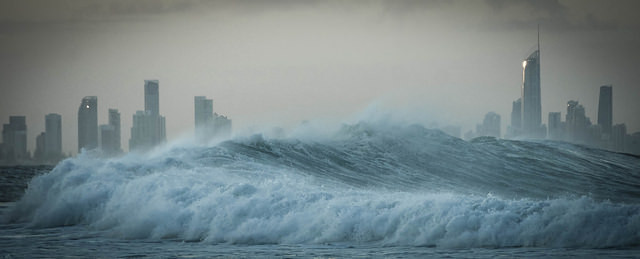A tsunami that almost wiped out the civilization in what is today's Guangdong province about 1,000 years ago still poses a risk today, according to the study conducted by Chinese researchers. The research highlights the danger of the massive and destructive sea waves, particularly to the coastal areas of the country.
Researchers involved in the study called the attention of the Chinese government to consider their finding, especially in future planning. The study, which was published in the January issue of Chinese Science Bulletin, said that there's absolutely a tsunami risk in the South China Sea.
Such risk should be considered in the future planning such as the construction of nuclear power plants, as well as key infrastructure projects under the "Belt and Road Initiative," the South China Morning Post reported.
The research team from the East China Normal University and the University of Science and Technology of China issued their warning that tsunami could likely hit the country's coastline. The study, led by Xie Zhouqing and Sun Liguang from the USTC, highlighted the deadly tsunami originated the South China Sea that almost wiped out the coast of today's Guangdong in AD1076.
Researchers found the first evidence from the destructive waves on Dongdao Island in the Xisha archipelago back in 2013. Their discovery included rocks and heavy corals embedded or buried in the seabed as far as 200 meters from the shore of the island. The team believed that only a massive tsunami could've lifted them out that far.
Through the use of computer modeling, researchers came up to the conclusion that the tsunami was likely triggered by an earthquake occurred on the Manila Trench - hitting the coasts of today's Guangdong and Hainan provinces of China, and possibly other parts of Thailand as well.
Researchers also obtained shards of Song dynasty (960-1279) ceramics in the tsunami deposit layers on remote Nanao Island, which is now under the administration of Shantou city. The team also discovered about 15,000 ancient coins in a shipwreck site just near the island. Researchers said evidence they found indicate Nanao Island has been hit by a catastrophic tsunami event.
The study was also believed to have played a part in urging Beijing to take action, particularly in building early warning system for tsunamis in the past years. The Science and Technology Daily also reported China has started deploying a tsunami buoy system near the Manila Trench in the South China Sea earlier last year - monitoring tidal signals and notifying the defense department on land trough satellite of any possible tsunamis.






